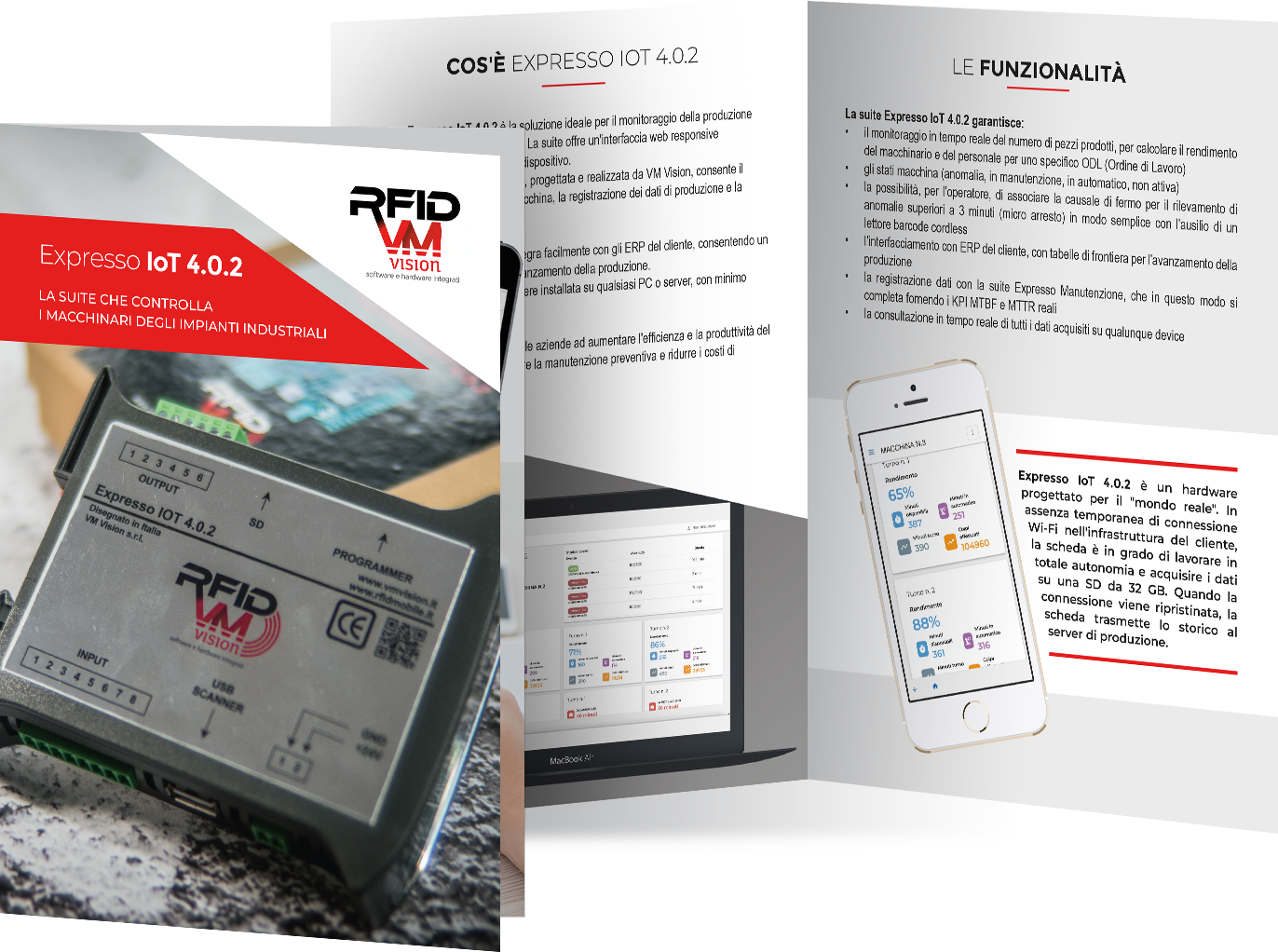Expresso IOT 4.0.2
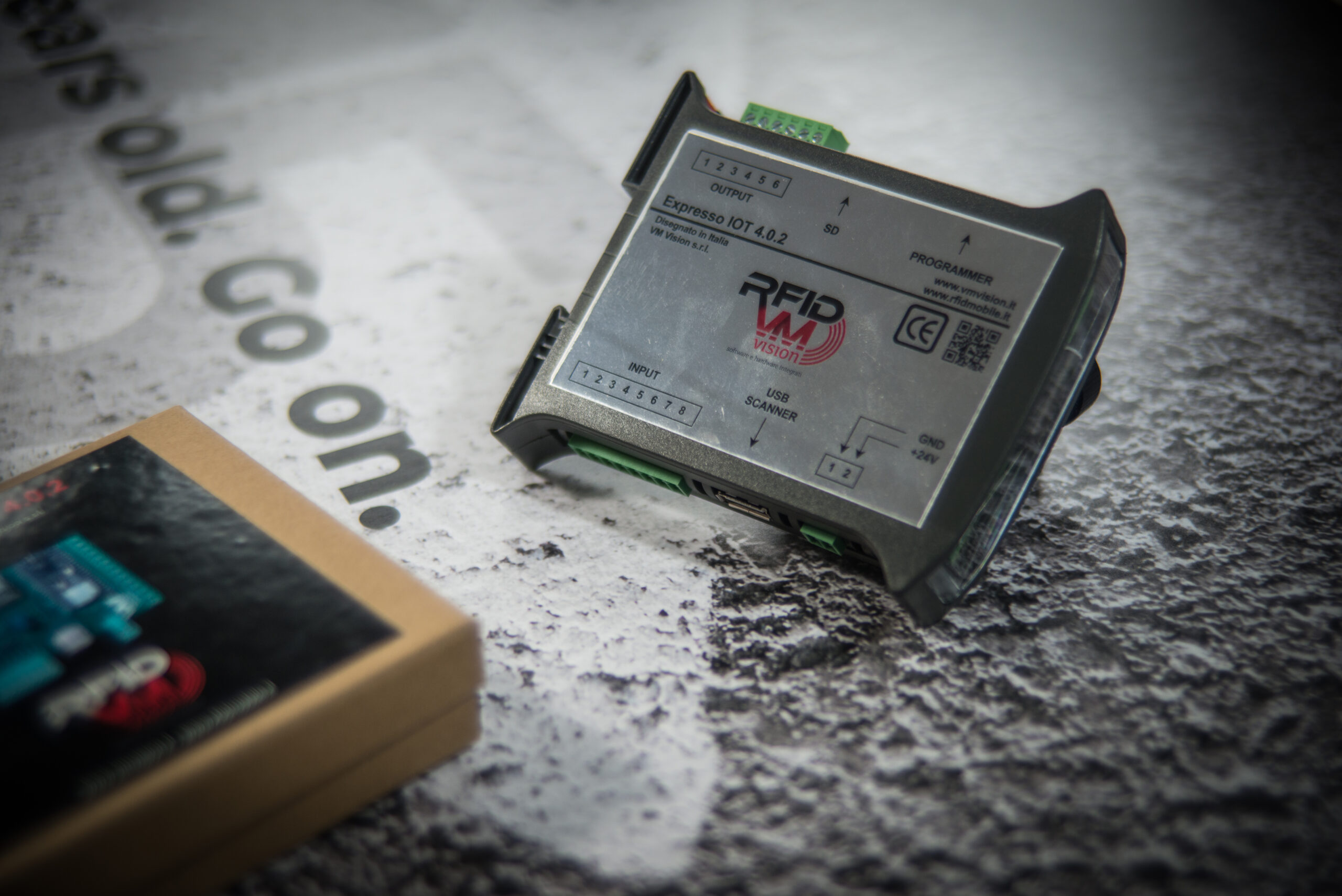
EXPRESSO IOT 4.0.2
WHAT IS IT?
Expresso IoT 4.0.2 is a VM Vision Wi-Fi IoT card used for monitoring machinery in industrial plants.
FEATURES
- 24V Wi-Fi/USB IoT card, 8 inputs, 6 relay outputs, 21A
- Arm Cortex M0+ microprocessor
- Frequency: 240 MHz
- Storage space: up to 2 Giga
- USB port for connecting to a scanner
Expresso IoT 4.2.0 can be customized to specific needs.
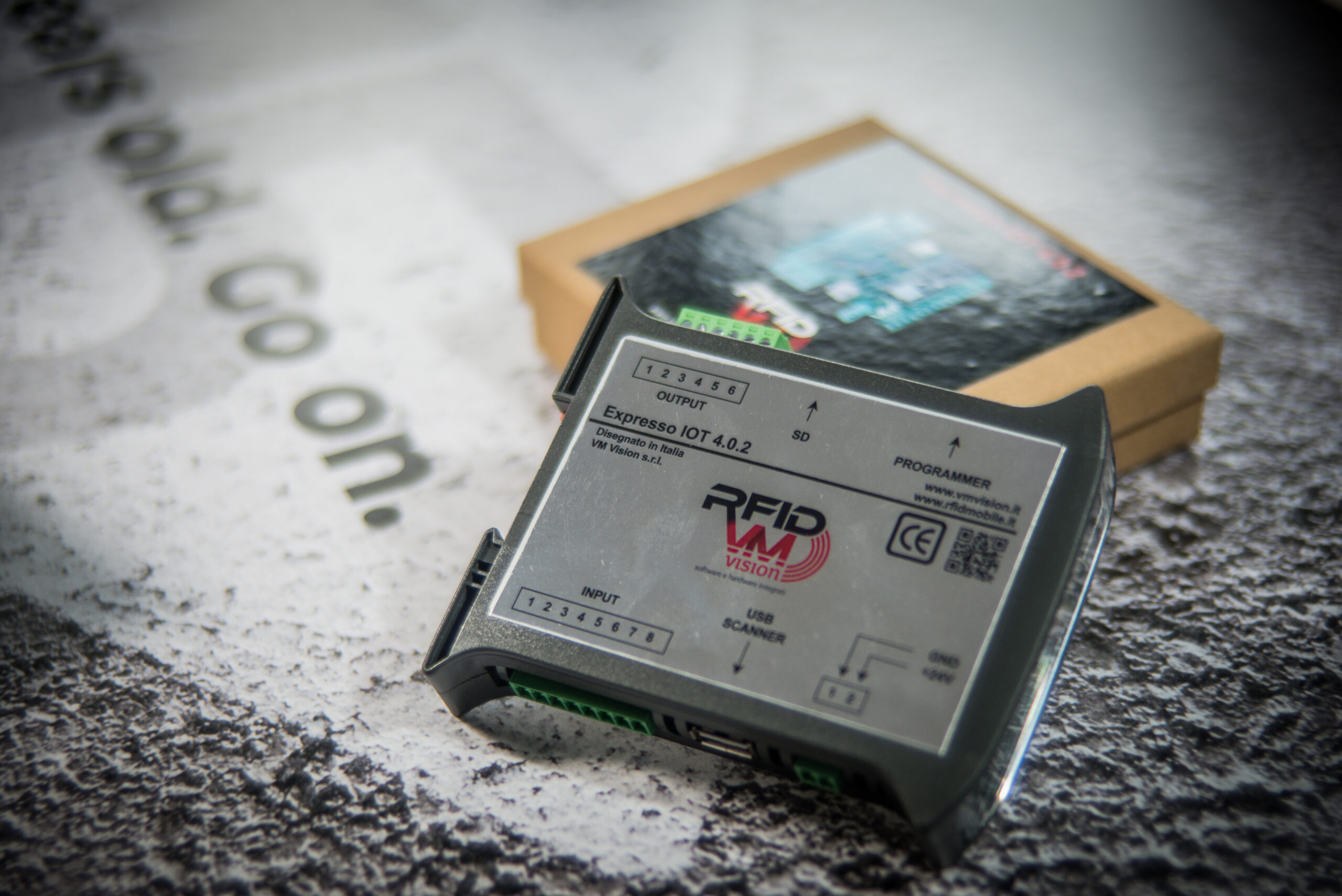
EVOLUTION OF A SYSTEM
At VM Vision we are never satisfied!
After completing our first IoT PLC board we immediately asked ourselves how we could improve it.
So we got back to work and, in a short time, we created Expresso IoT 4.0.2, which compared to its predecessor features some important innovations:
- it is Wi-Fi, and therefore does not require wiring
- It has a more powerful microprocessor
- It has more input ports, 8, and output ports, 6
- offers more data storage space
- It is equipped with a USB port for connecting to a scanner
- It has a more refined aesthetic
GENESIS OF THE FIRST IoT VM VISION BOARD
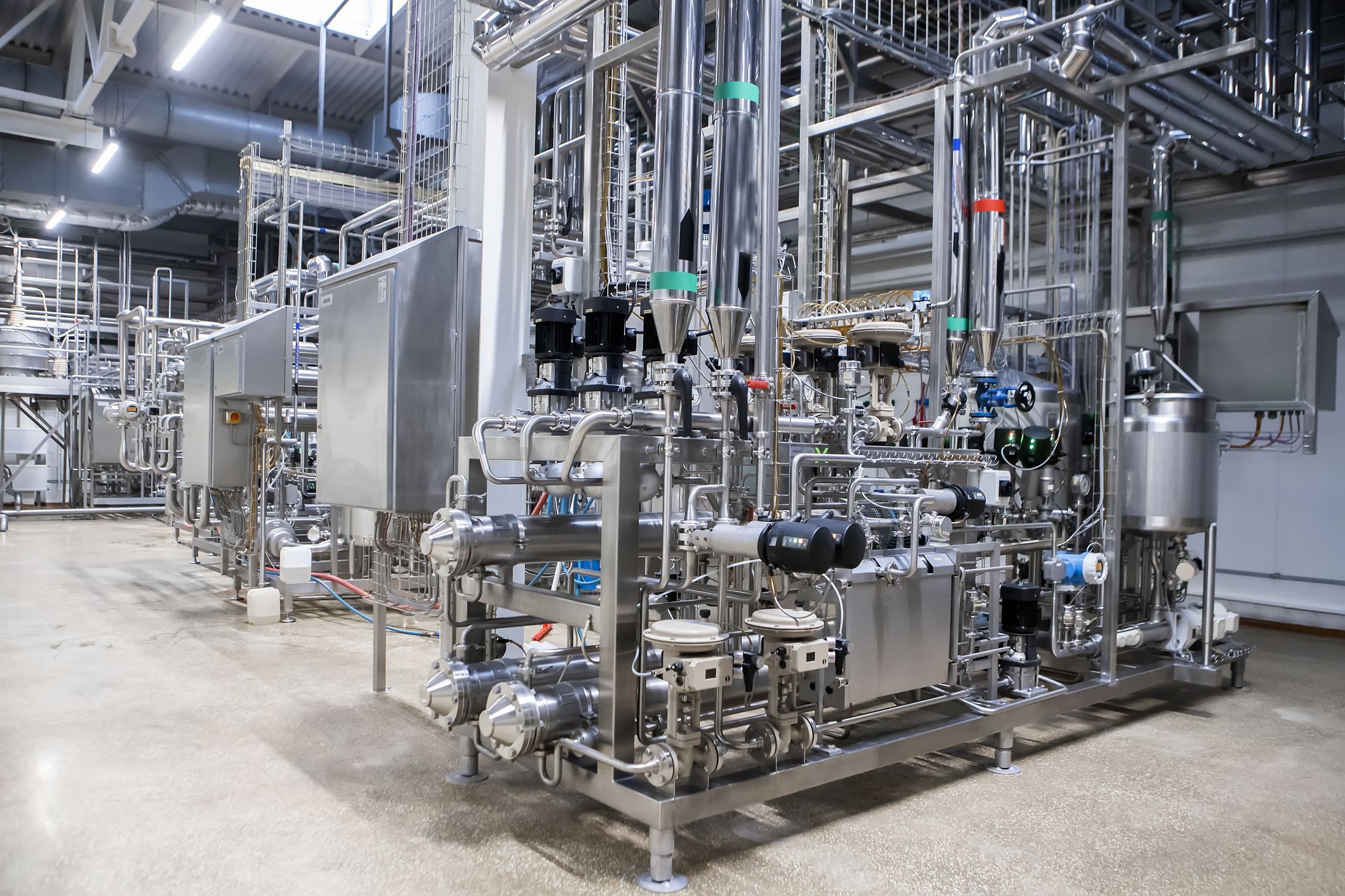
THE REQUEST
The Customer, undergoing an imminent ERP* change, requests the monitoring of 15 machines including presses, profiling machines and more.
In the company, the electrical panels do not have updated documentation.
* Enterprise Resource Planning is a management software that integrates all business processes and all functions of a company such as sales, purchasing, warehouse management, finance, accounting.
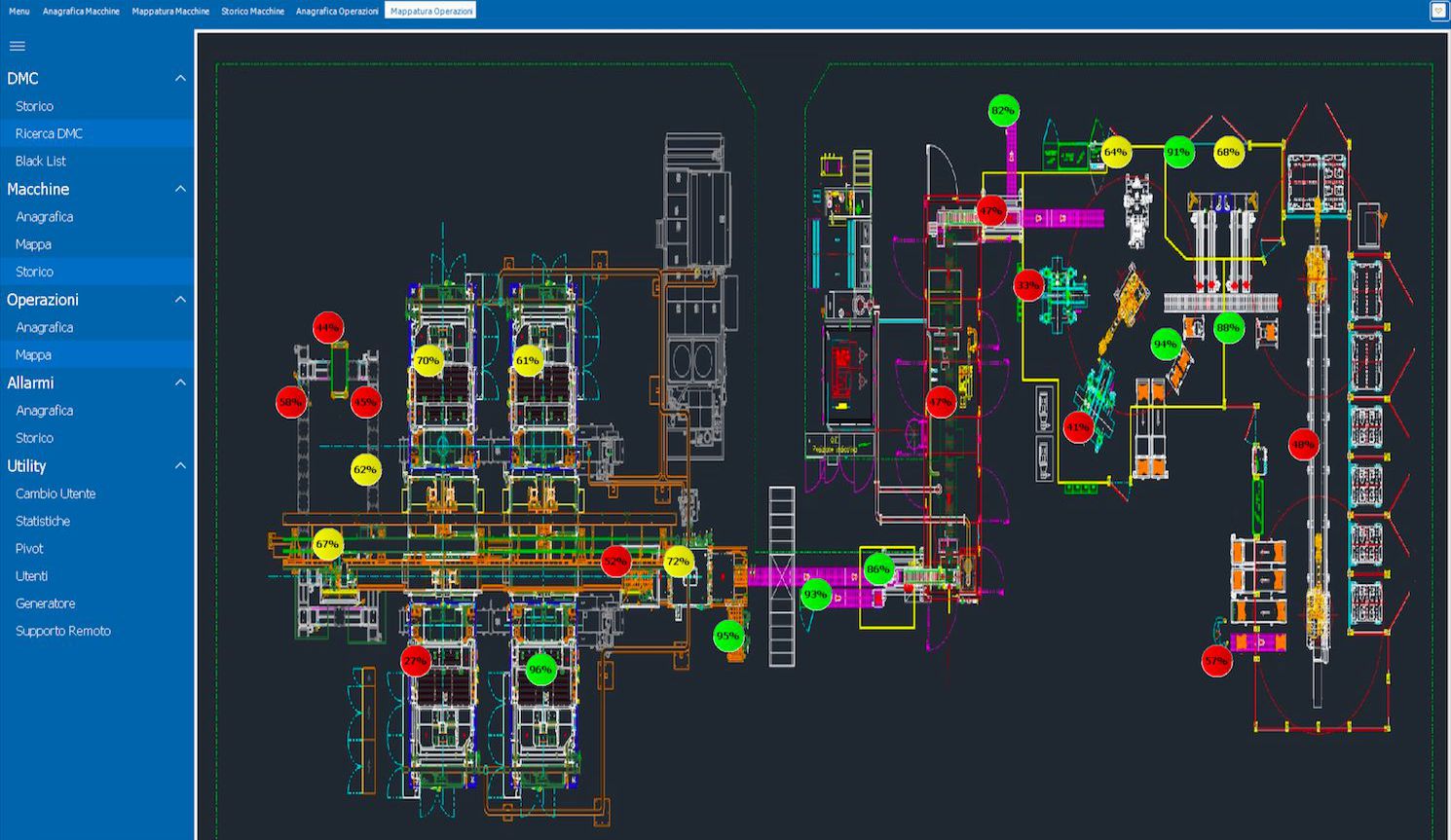
THE ANSWER
With our Trace 4.0 , the software that allows real-time monitoring of all the stations that make up the plant, we can detect production, downtime with the related reasons, associate the production of the machines and operators with the ODLs ( Work Orders) generated by their ERP and then pass the data back to the production progress program integrated into the customer’s ERP.

THE WORK PROGRAM
Dobbiamo:
- Tap the panel cables of each machine to recreate the documentation for the connections to the new board.
- Develop the Operator Panel software that communicates with our Trace 4.0 for each machine.
- Install an Ethernet PLC (Programmable Logic Controller) to connect it to the PC where the operator will interact to enable the machine, select the ODL, the reasons for the downtime and everything requested by the customer.
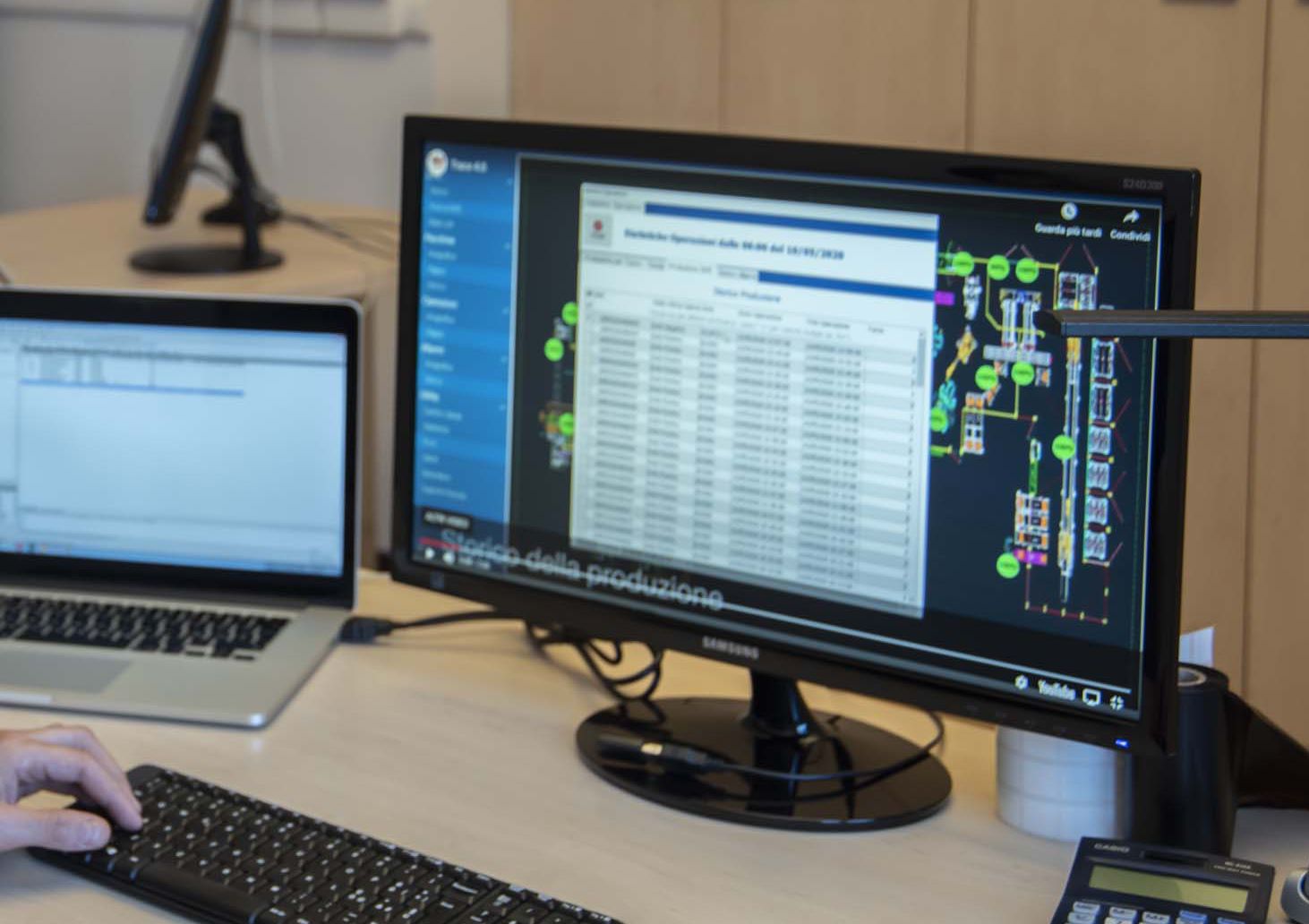
START WORK
The operation includes:
- The intervention at the customer’s site where, with his maintenance technician, we beat the existing cables and recreate the necessary documentation for the signal wiring.
- The beginning of the development of the desktop part in the office, using one of our standards as a basis.
- The selection of a couple of PLC models that we usually use and the request to our Suppliers.

THE PROBLEM
The suppliers contacted expect excessively long delivery times, which will not allow us to deliver the system on time.
To this we then add:
- Lack of necessary hardware.
- Supply times beyond the useful time.
- Increased hardware costs.

THE SOLUTION
Why not create our own card?
This would allow us to avoid any supply problems and not have to use the tools of the various manufacturers!
THE PROS
- Faster supply.
- Lower cost.
- For us, maximum freedom to develop on board the board from time to time, for each individual project, based on customer requests.
THE CONS
None, apart from the amount of work to create the first prototype.
THE CONDITIONS
For the creation of the PLC we have

engineers capable of making the hardware?
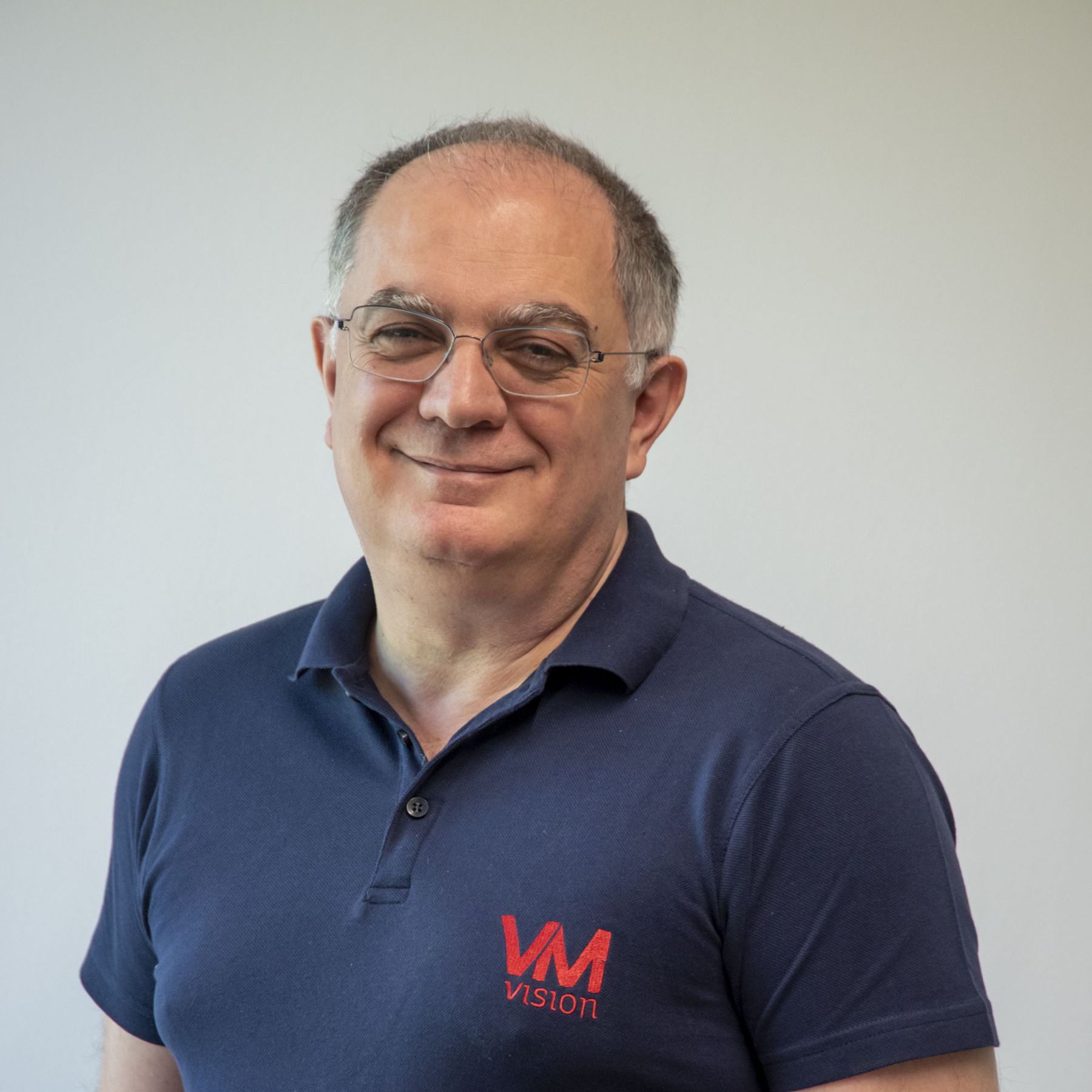
developers can develop the software?
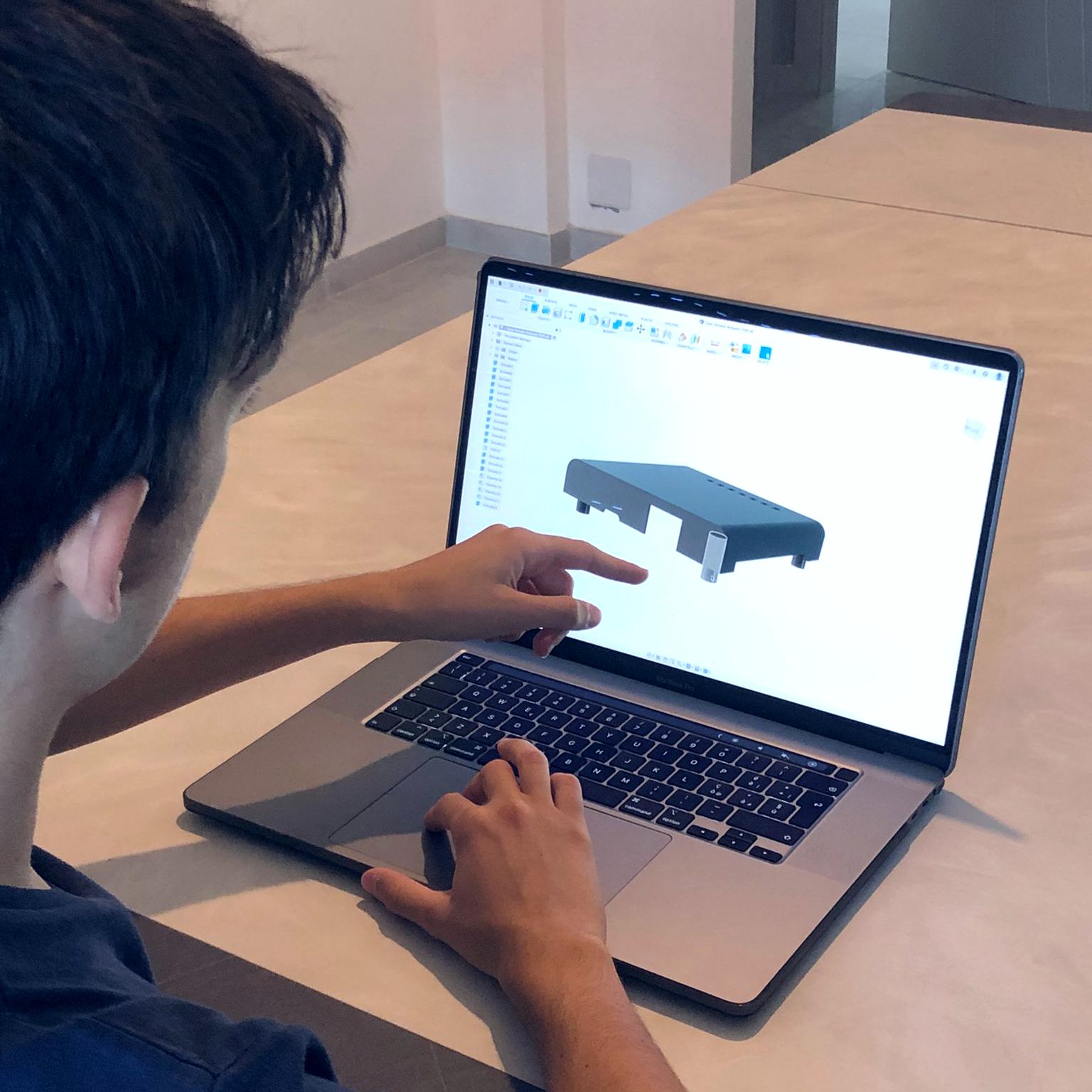
the designers to create the card case?
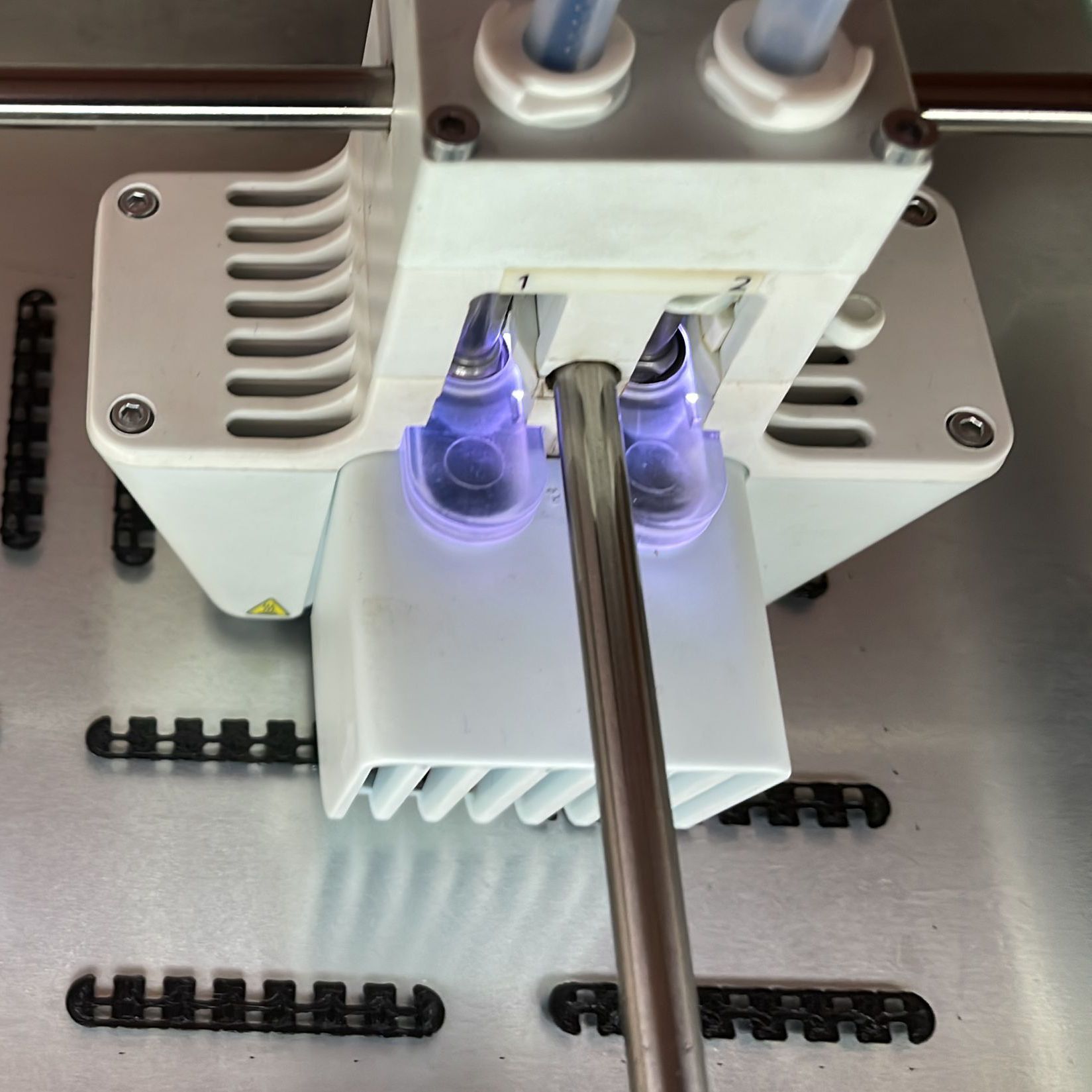
a 3D printer to make case prototypes?
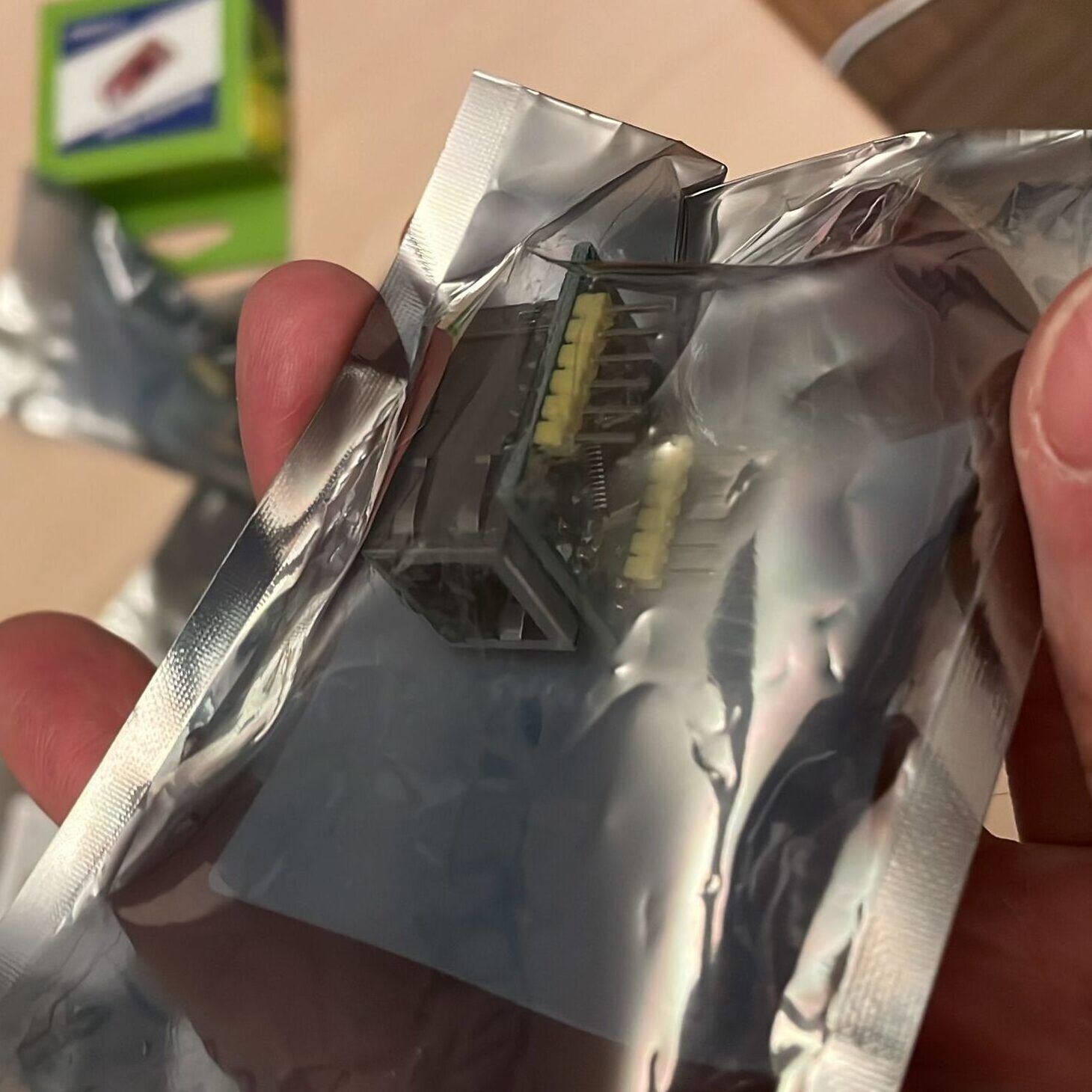
the right suppliers for the PCB and components?
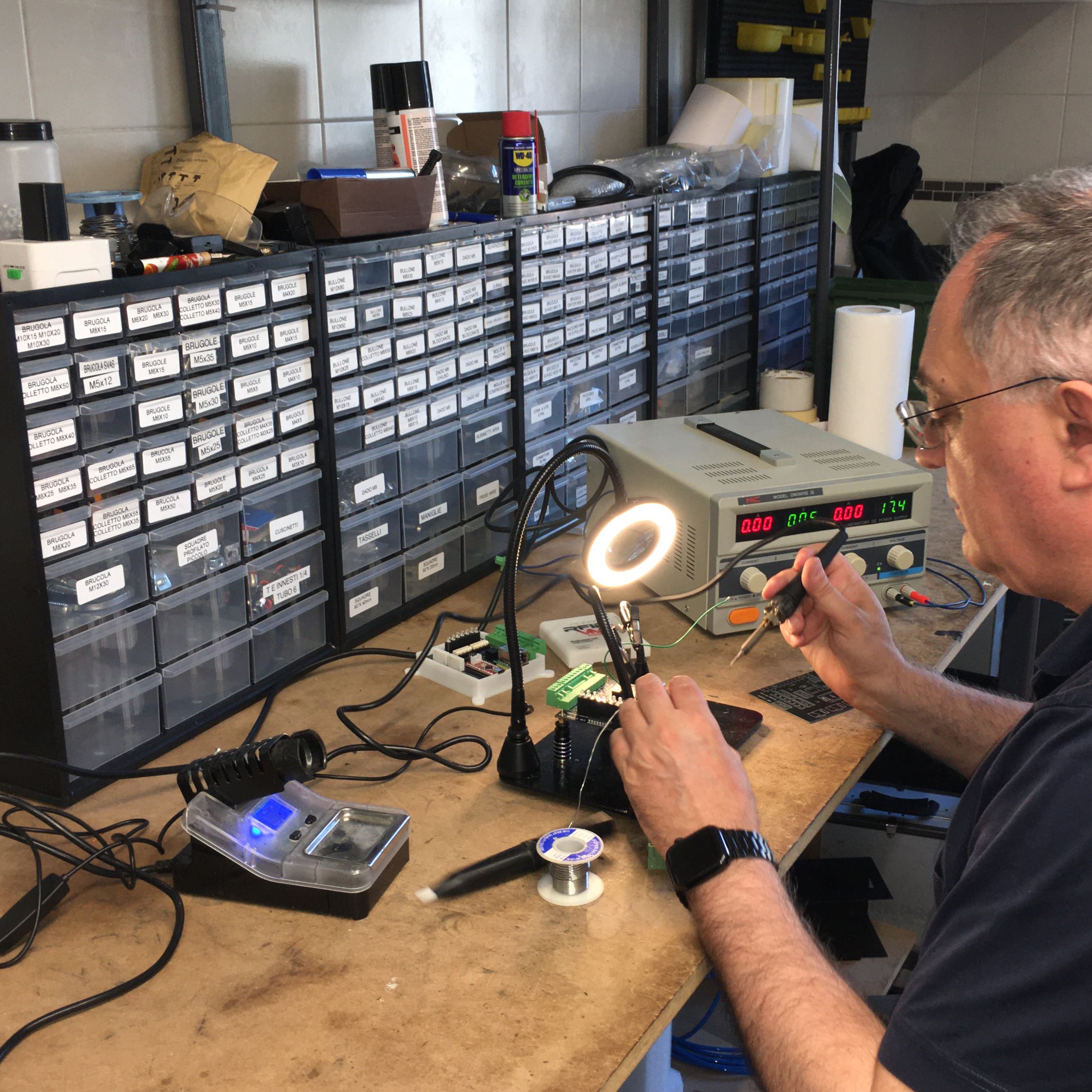
a laboratory equipped for assembly and testing?
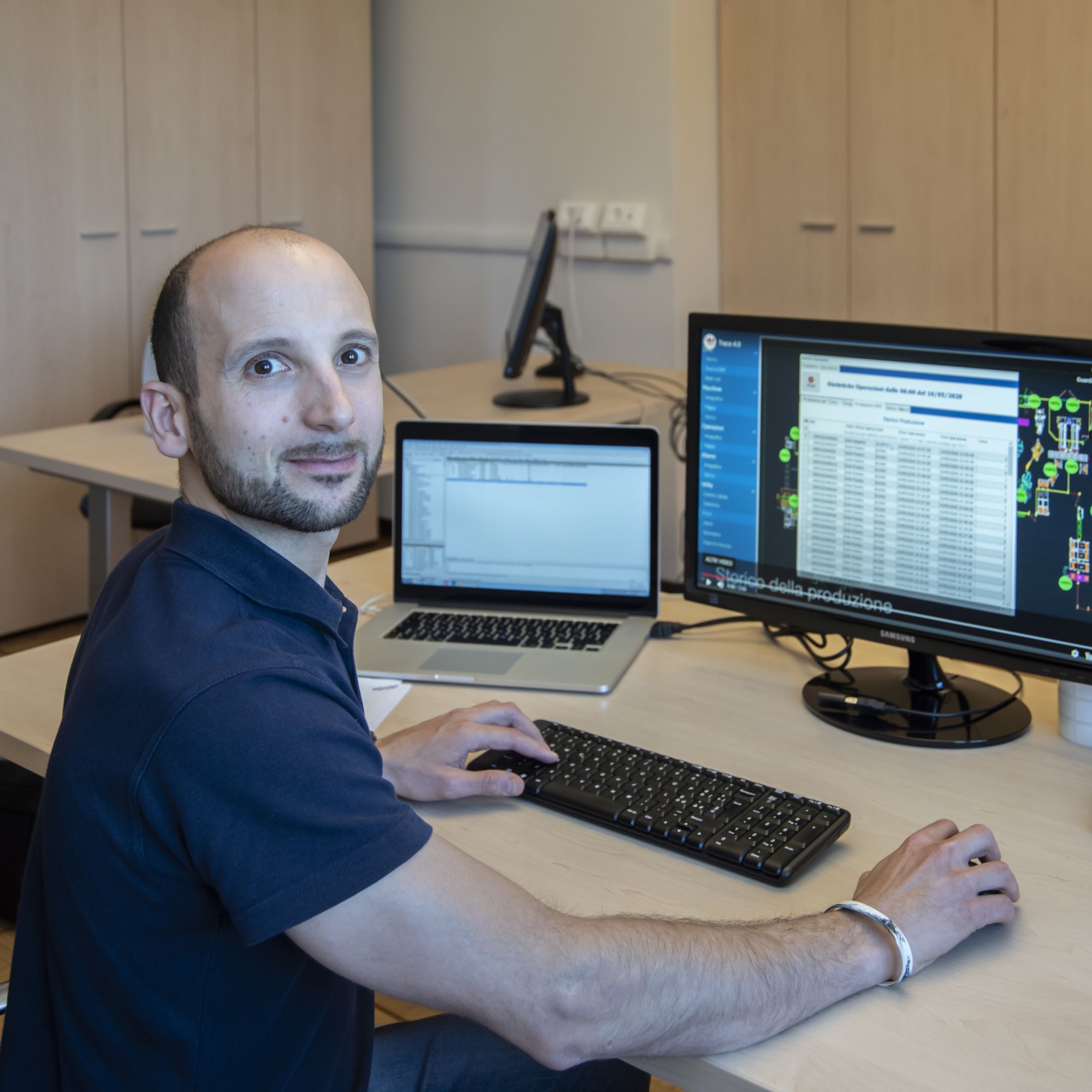
the technicians for the assembly of PCBs and components and for the related testing?

a little desire to build our own products in a short time?
The answer is only and always the same: YES!
Then all we have to do is leave…
THE CHALLENGE
DESIGN

The team of programmers made up of Giorgio, Matteo, Alberto, Daniele, Dan and Massimo carries out a preliminary analysis to define the final objective, the division of tasks and the work programme.

Giorgio, as project manager, starts the design of the PCB (Printed Circuit Board) by choosing the microprocessor, the Ethernet connection, the maximum number of I/O (Input/Output) to manage and the size.
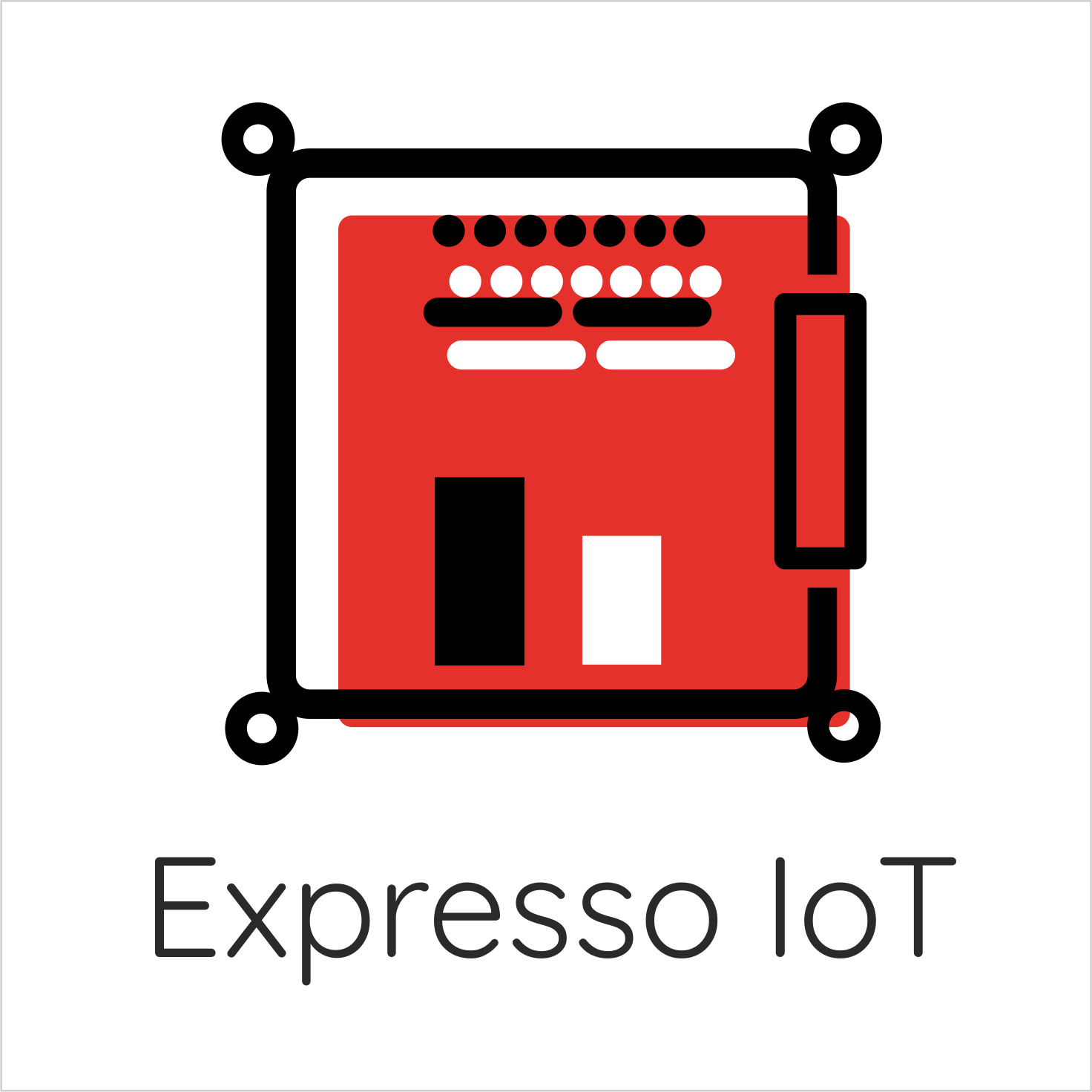
Giorgio also chooses the name of the new creation: Expresso IOT 1.0.0.
PROTOTYPING
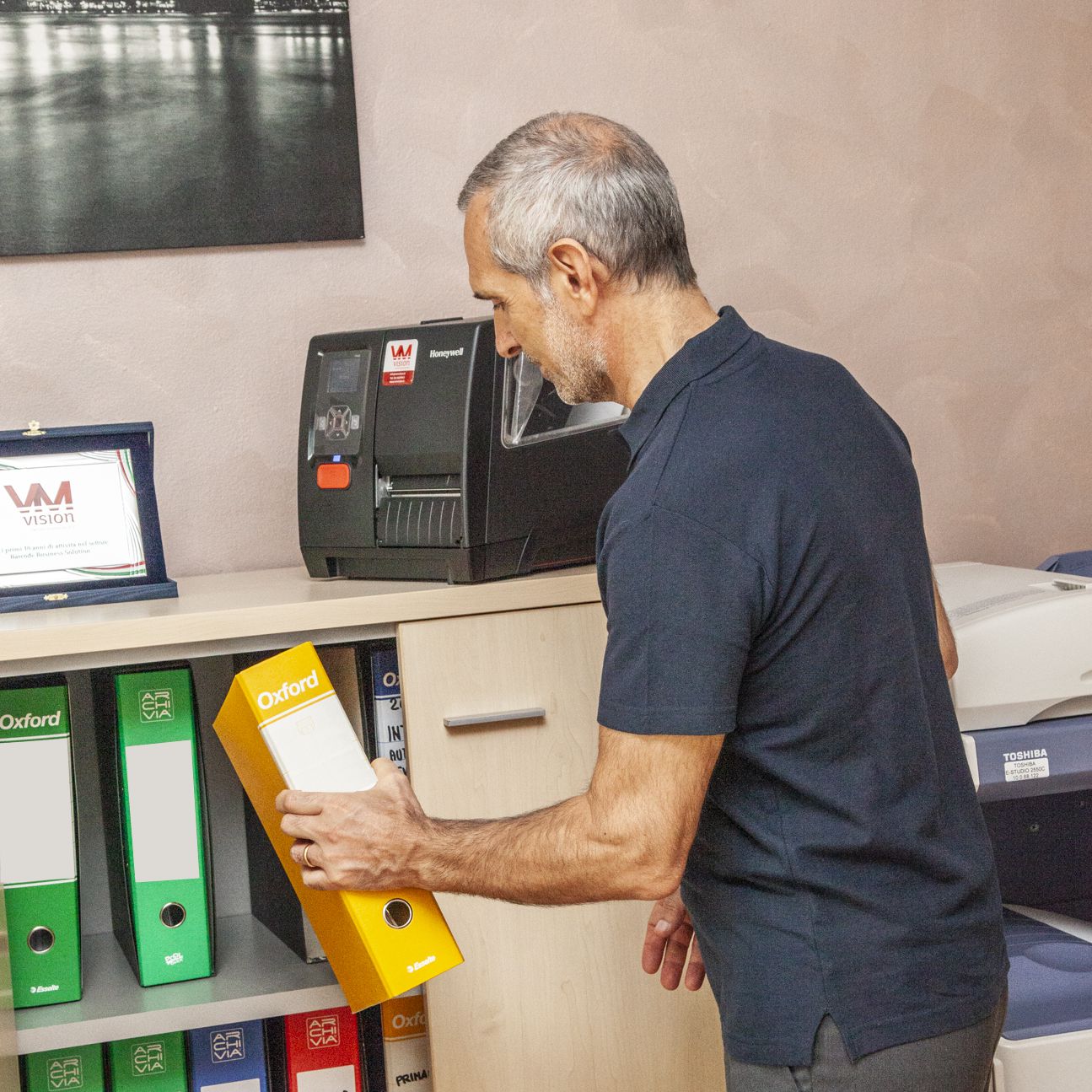
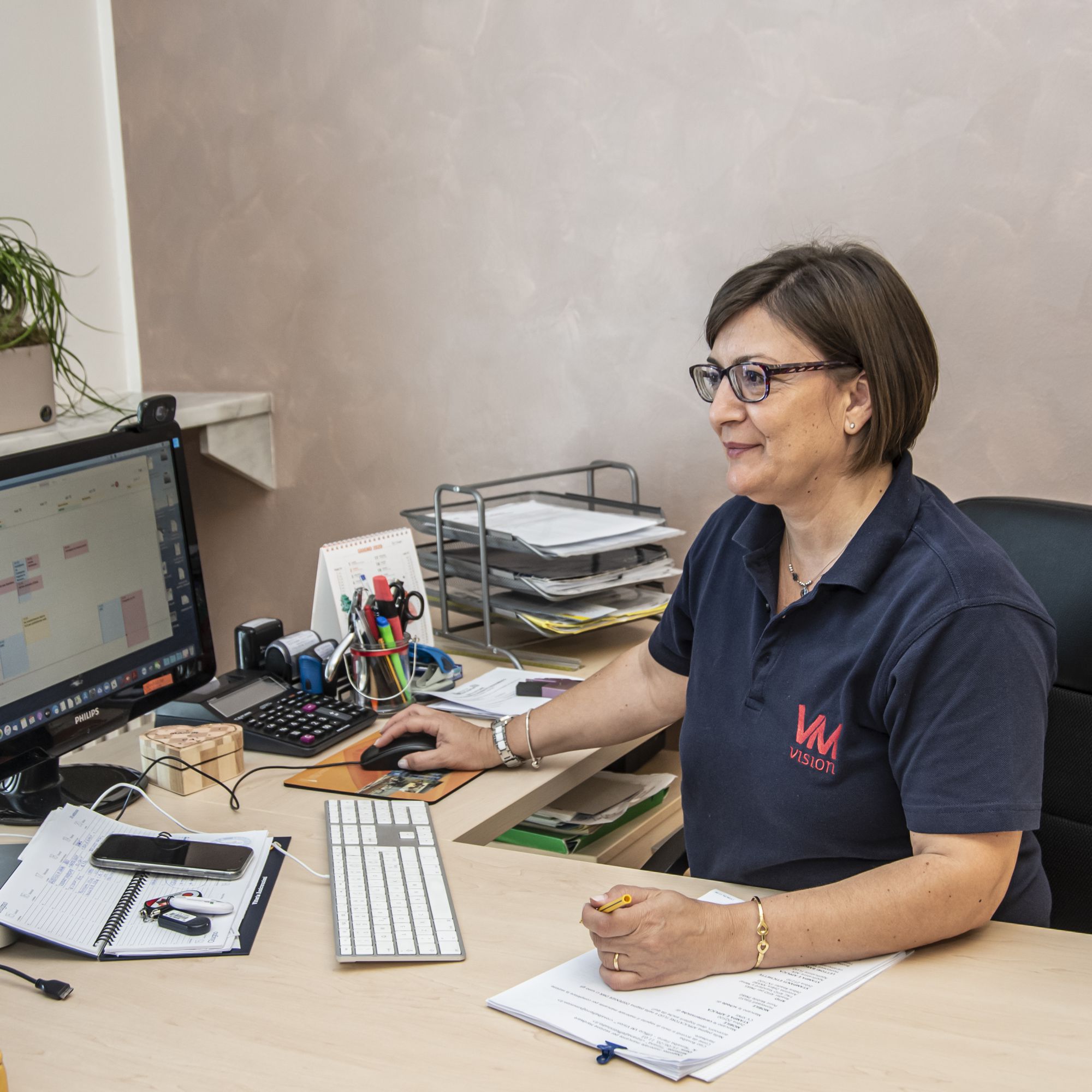
- We order the components and PCBs for 2 prototypes and, involving the internal Accounting Office managed by Rosalba and Giovanni, we proceed with the purchase of the various components. A purchase made to perfection, on the basis of a Di.Ba. (Bill of Materials) drawn up in line with the rigorous modus operandi of our accountants.
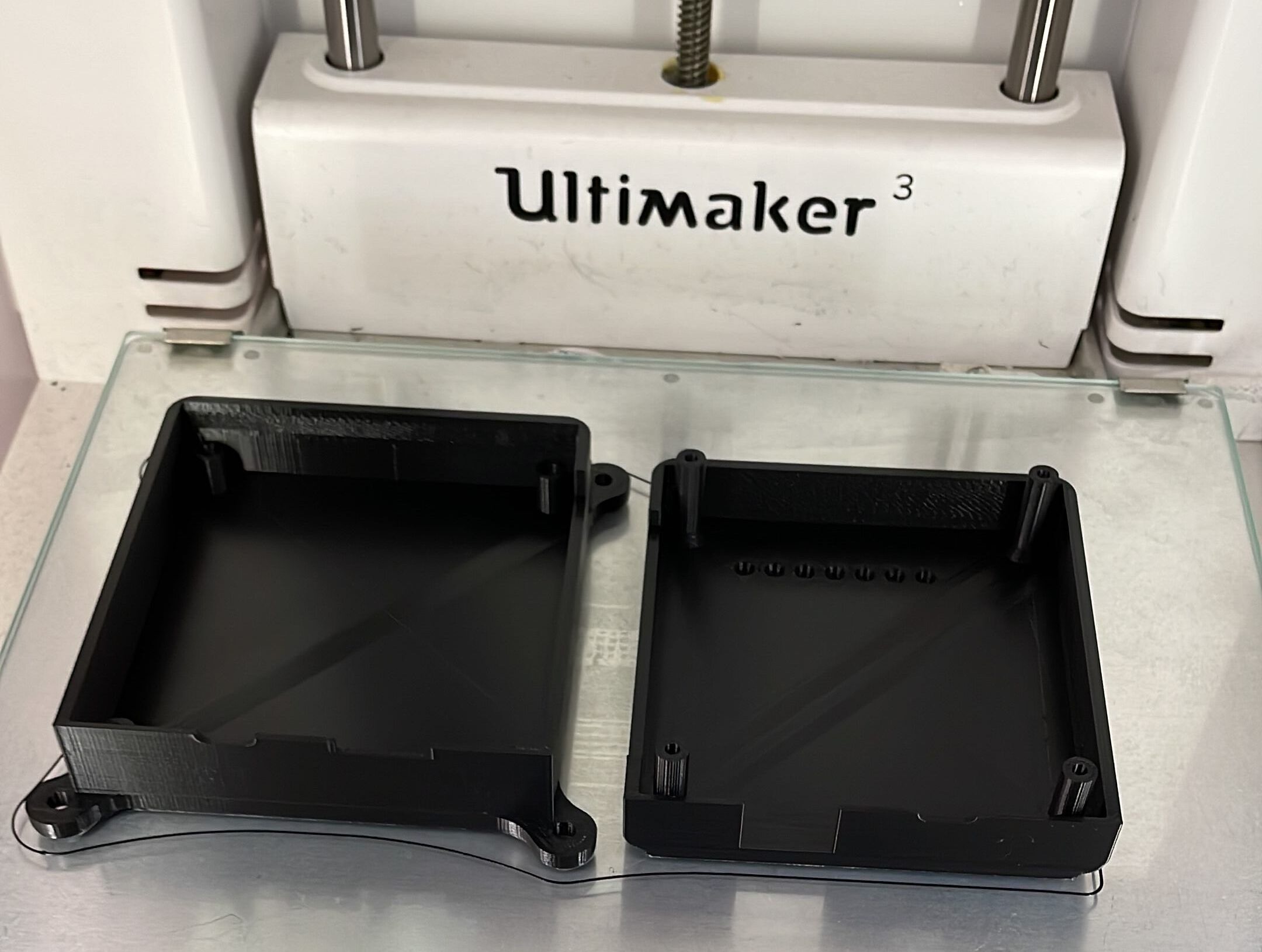
- All the 3D drawings are provided to Alberto who proceeds to design the case for the new card.
- Once the case design is complete, a print is launched on our Ultimaker 3 3D printer.
- We create the first container prototype.
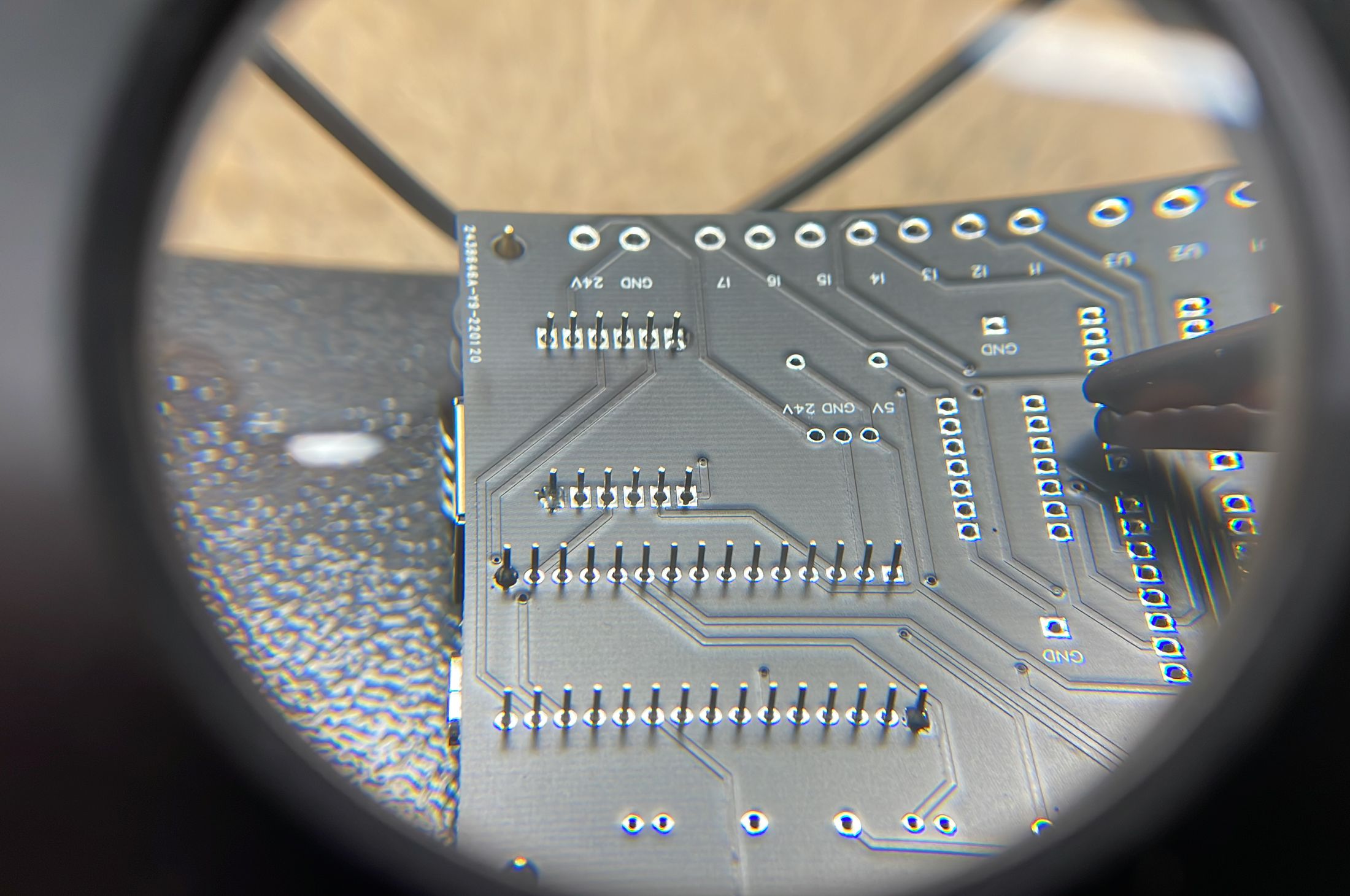
- The components arrive, Daniele assembles the PCB and proceeds to test the board. A good morning starts in the morning…!
DEVELOPMENT AND TESTING
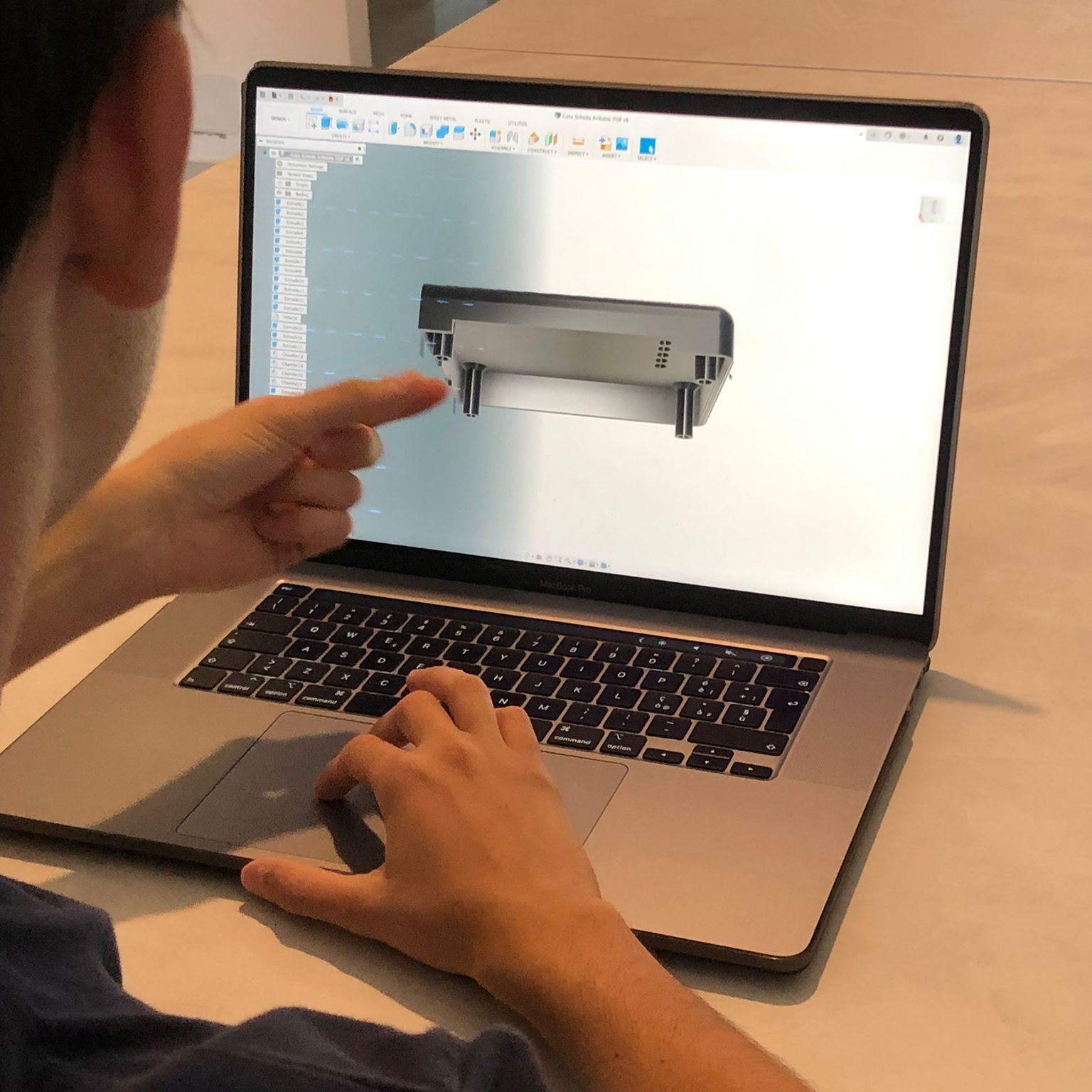
Alberto checks the dimensions, makes corrections to the case and relaunches a new print, which will later be modified several times because Massimo always wants to obtain the… maximum!
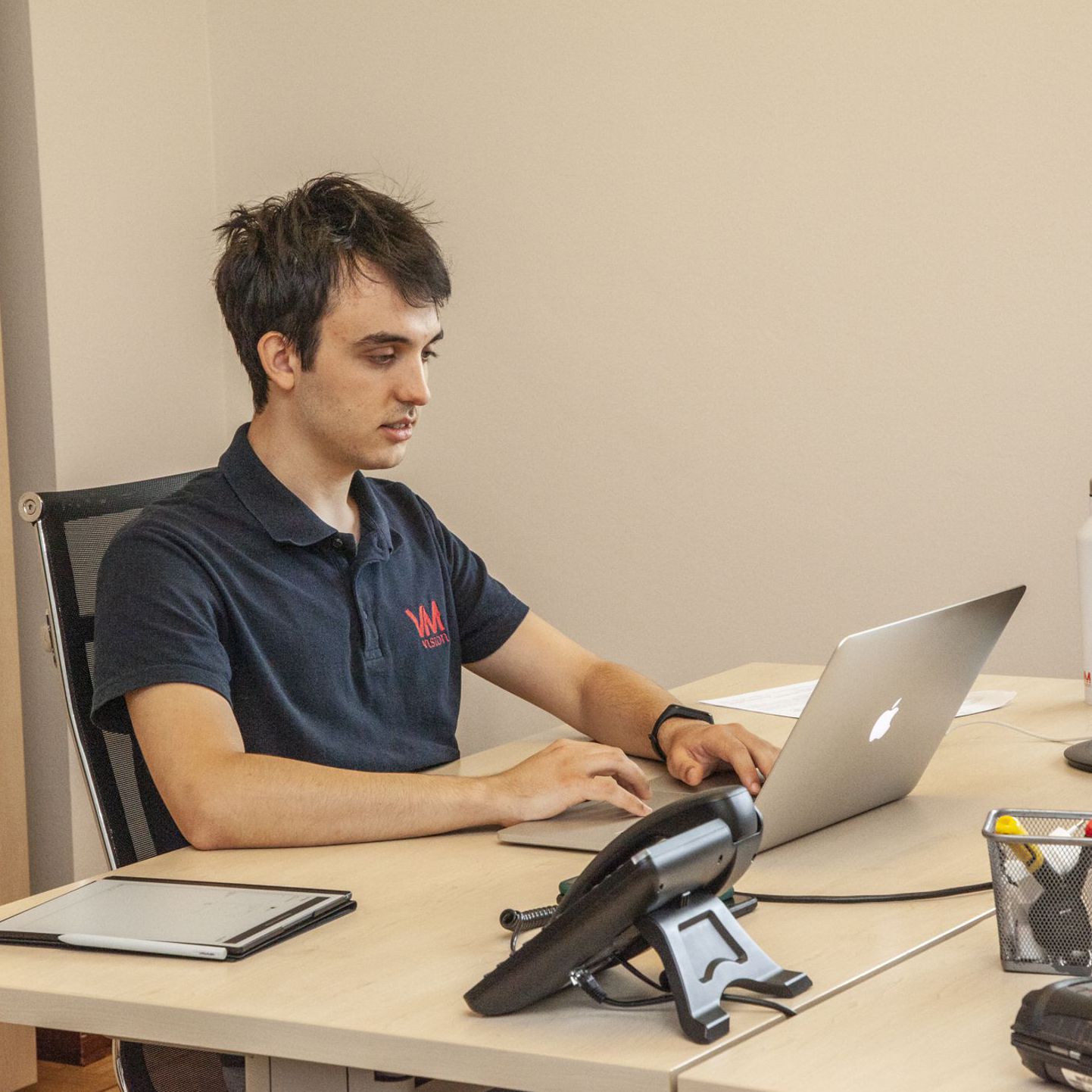
In the meantime Matteo proceeds with the software development on the new board and the integration with the customer’s panels.
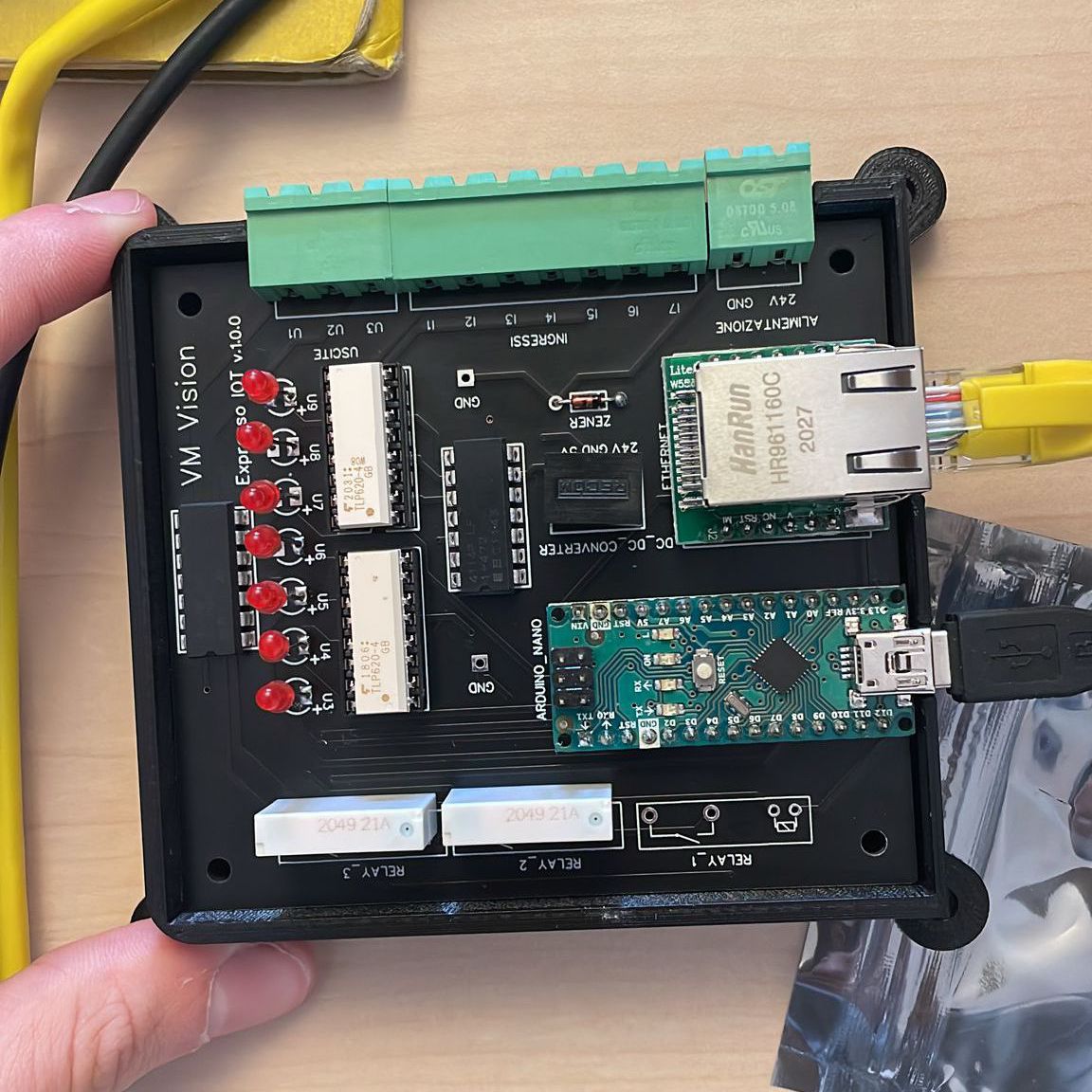
Dan sets up a test bench and programs software that simulates a customer machine. A test is carried out over several days, simulating one cycle per second.
The testing is now complete: Case and PCB are perfect and the software is ok.
ASSEMBLY
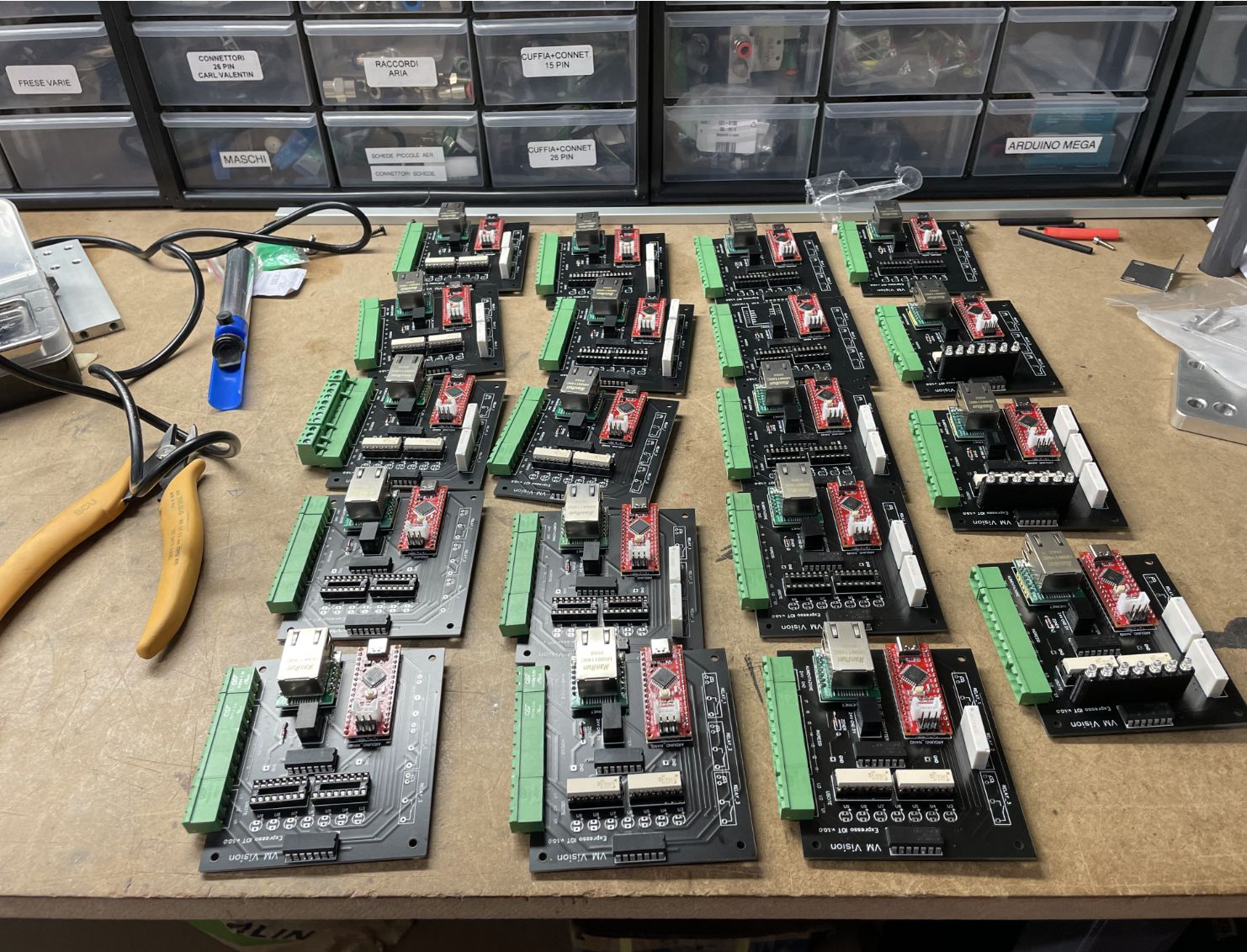
We order the cases and all the materials from our trusted suppliers to prepare a batch of 20 boards.
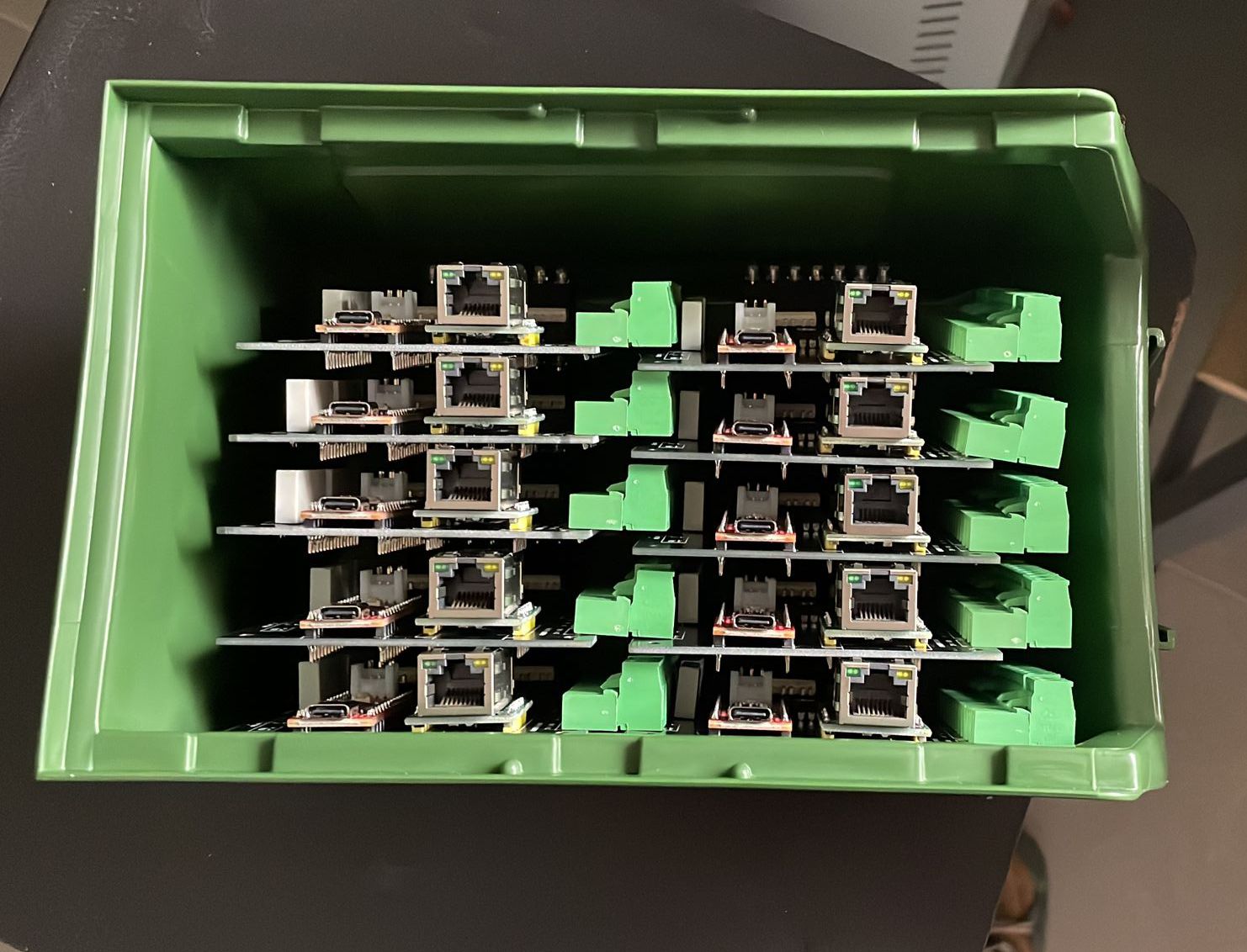
The material arrives and we complete the assembly of the first VM Vision PCB.
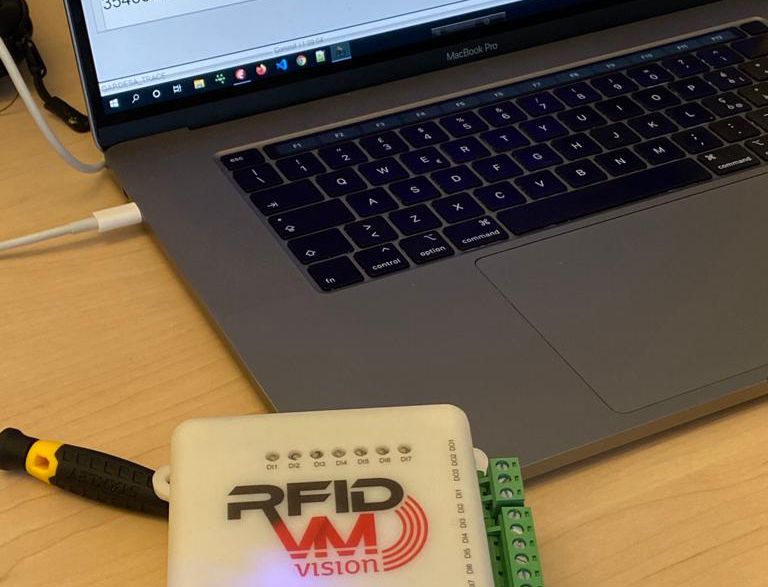
After having tested every single PCB we install the system on the customer’s production line.
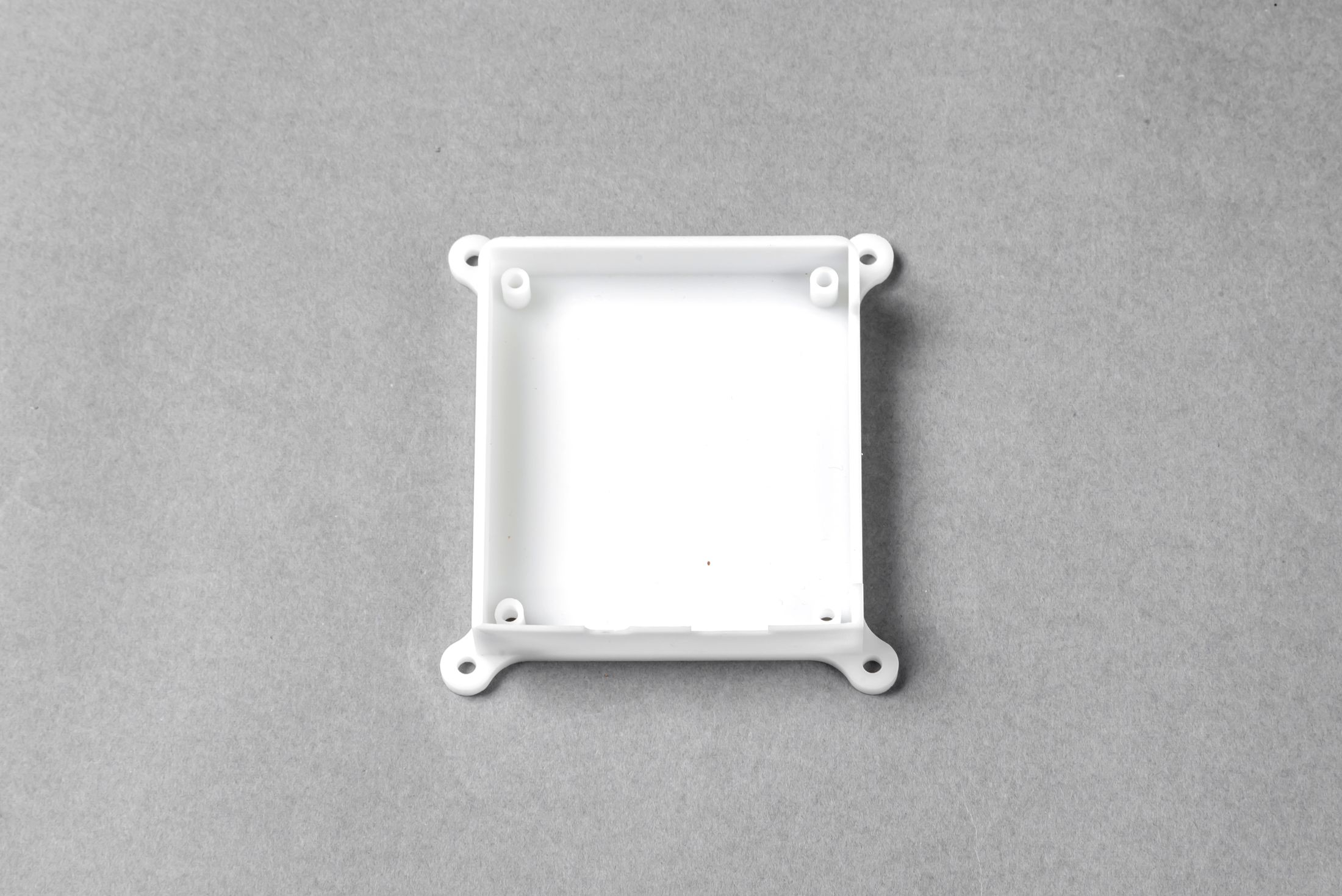
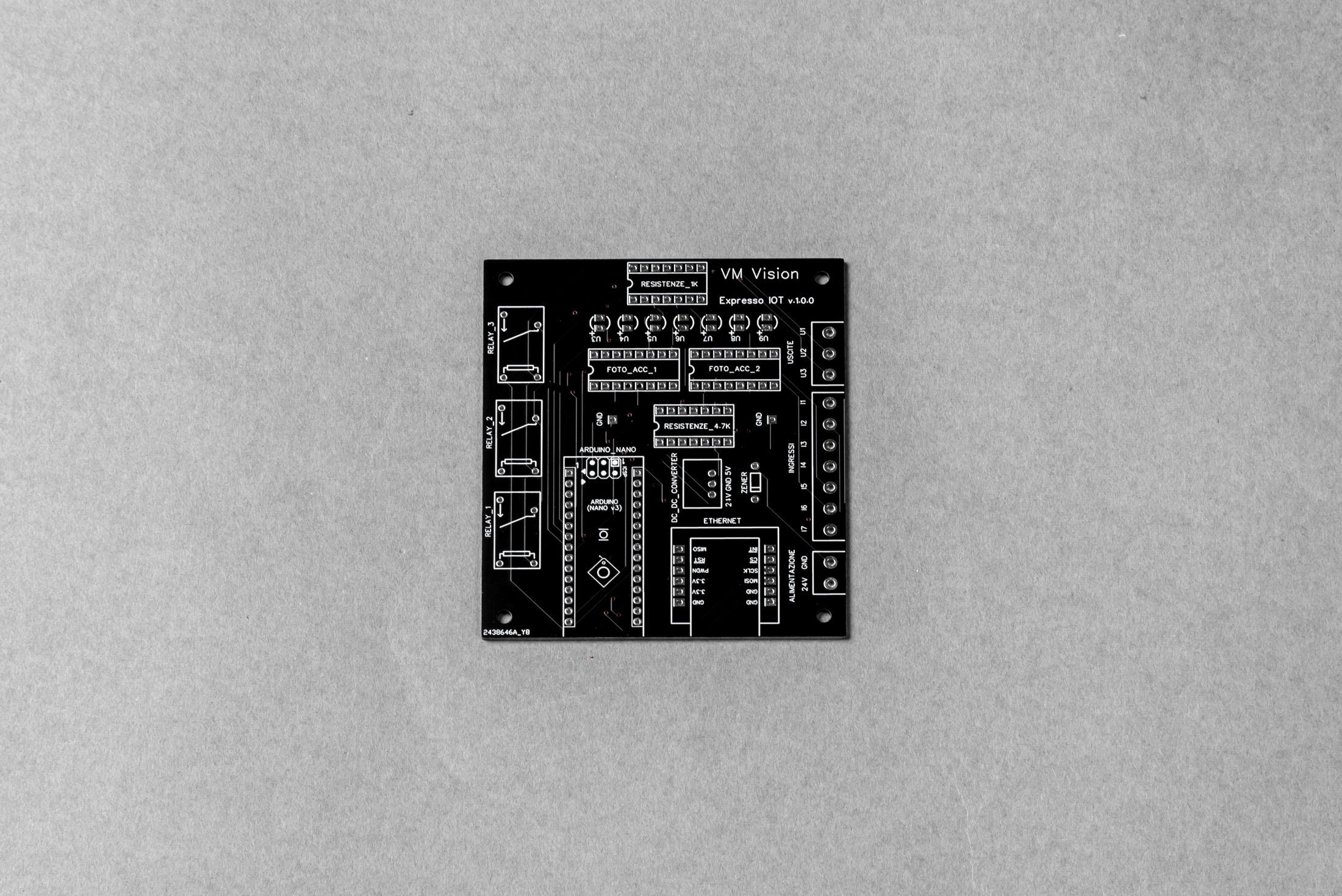

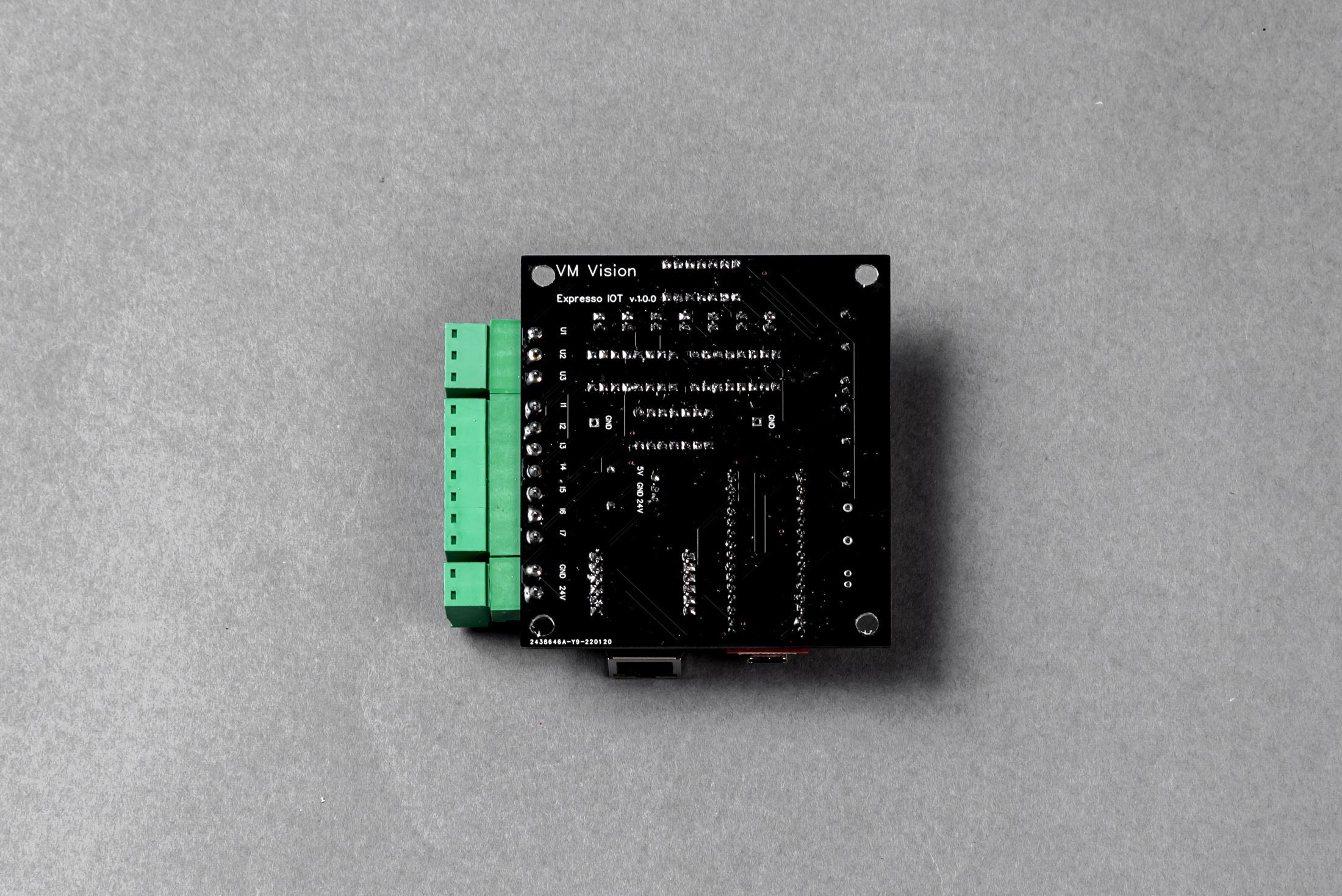
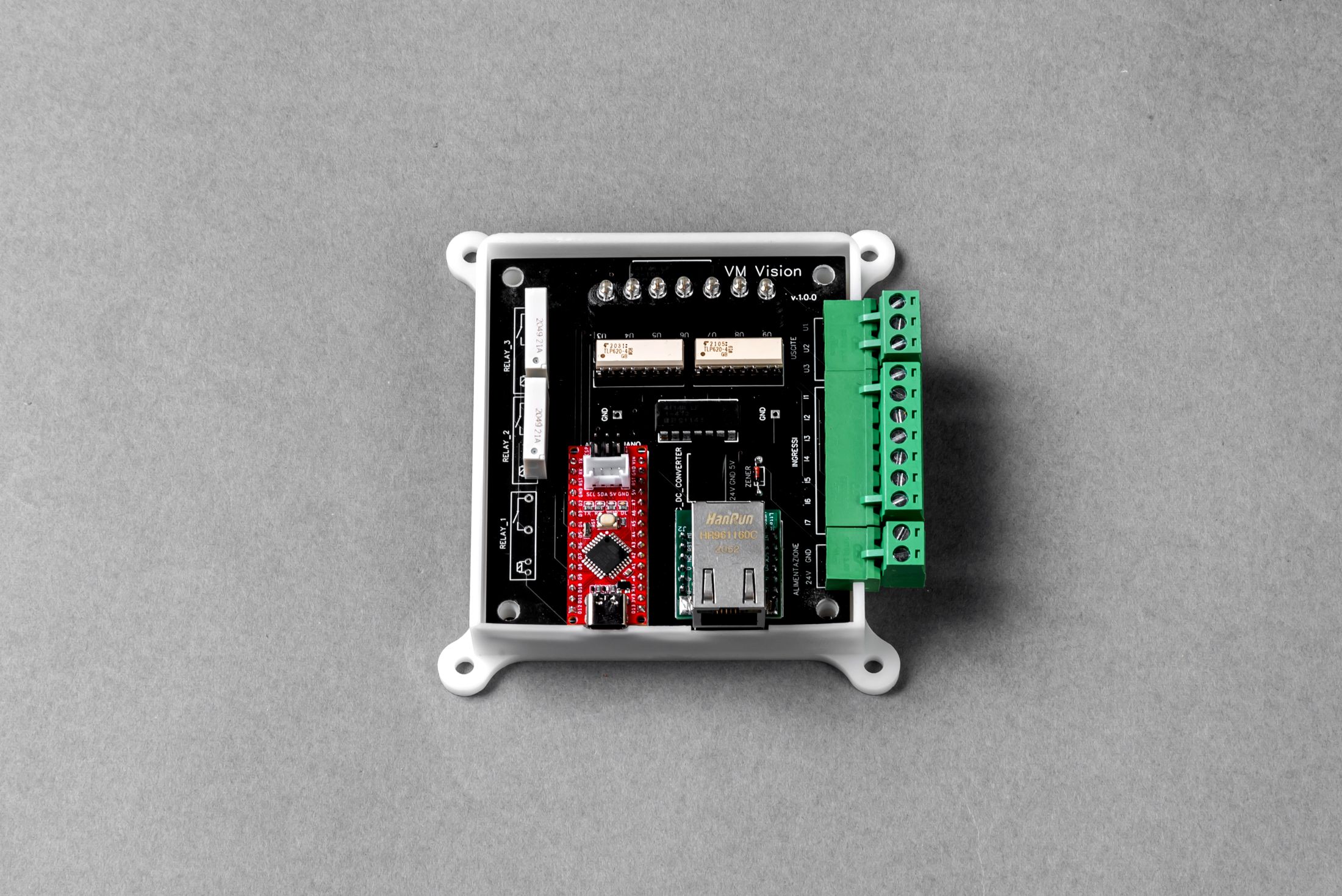

CONCLUSIONS
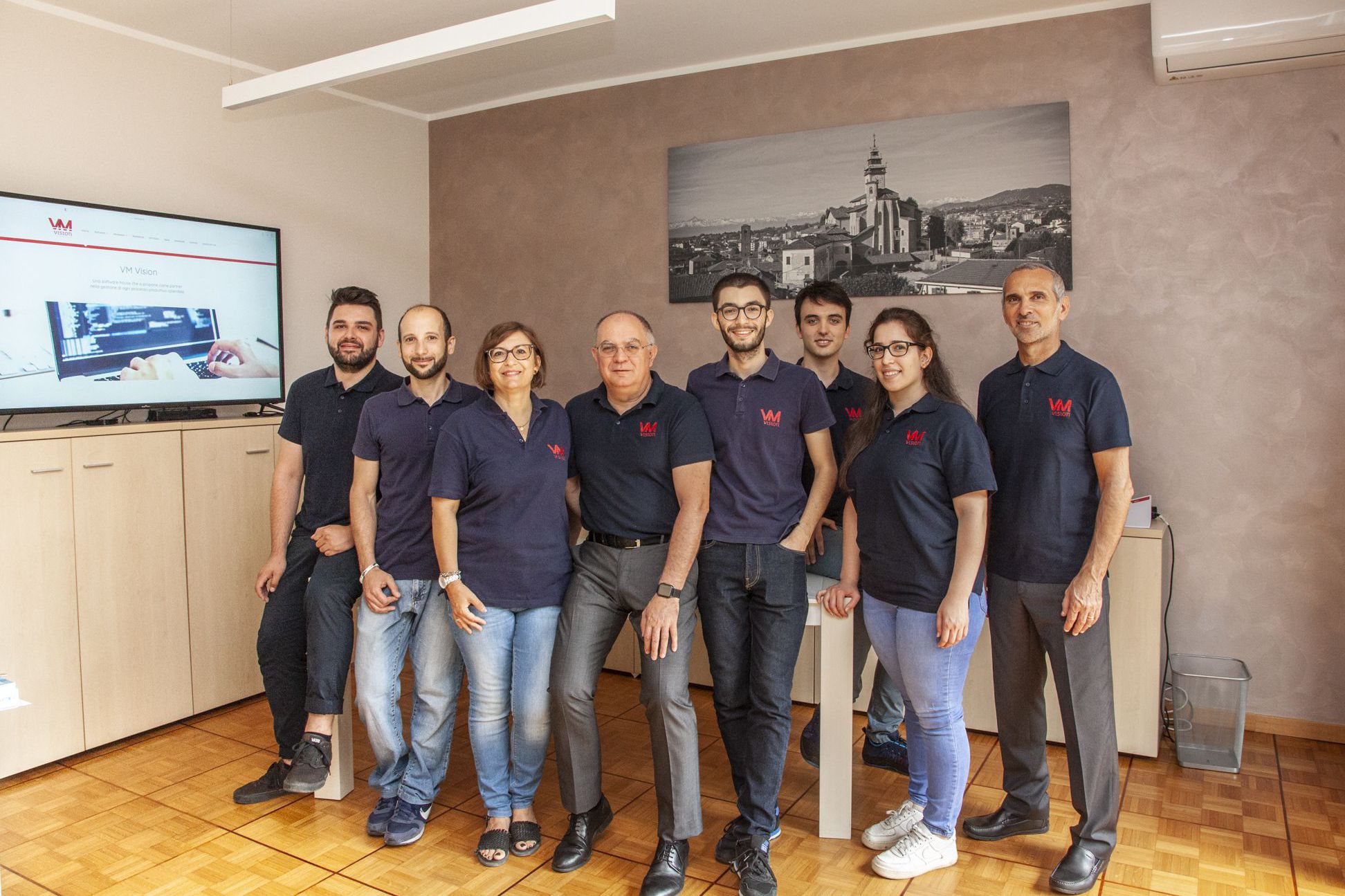

The objective is achieved. By developing a solution for the customer we have created a new product made in VM Vision which opens up new business opportunities for us.
And it doesn’t end here, because at VM Vision we never stand still. While we were developing this project, quite a few other ideas came to us…

